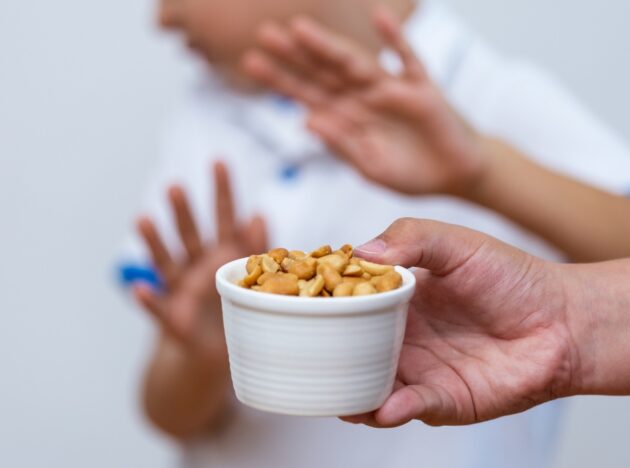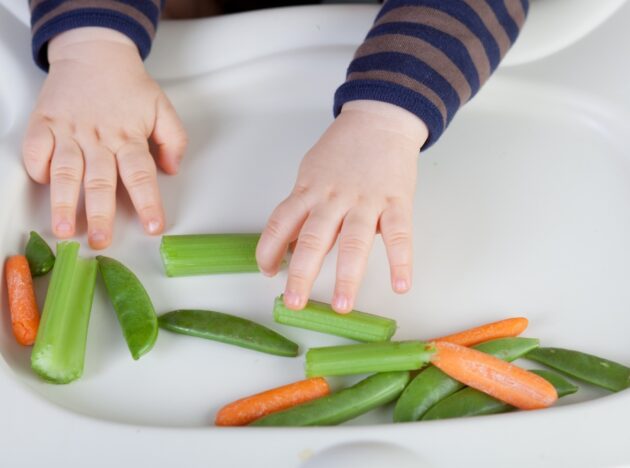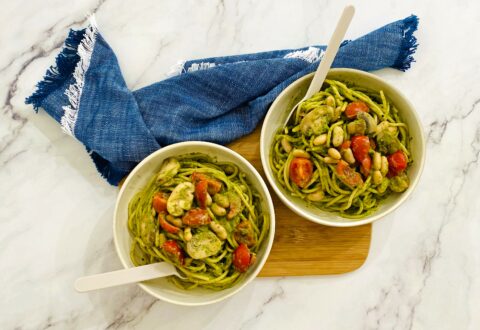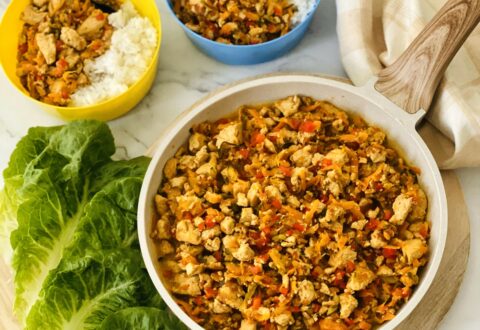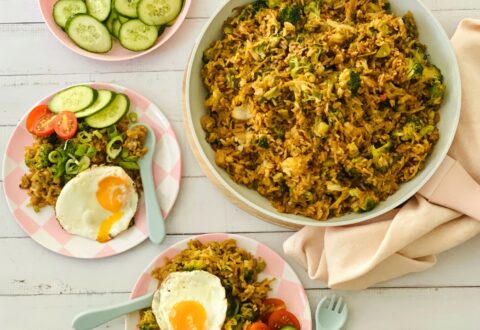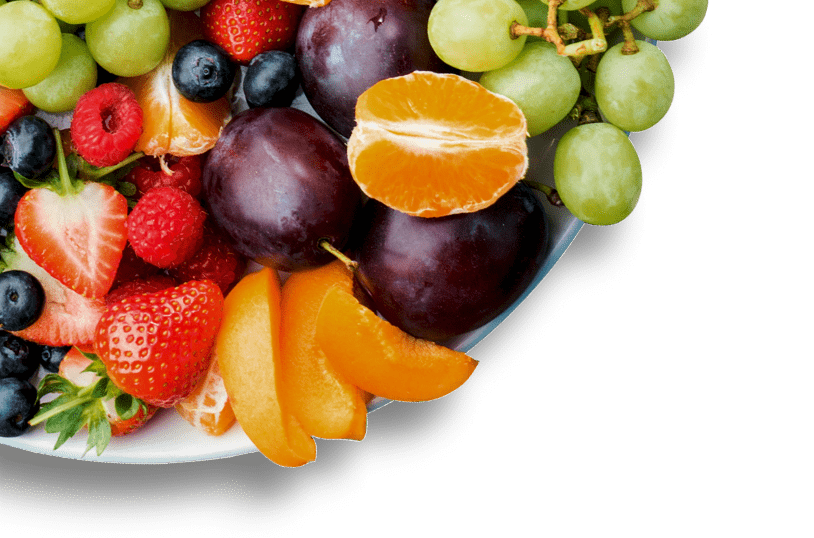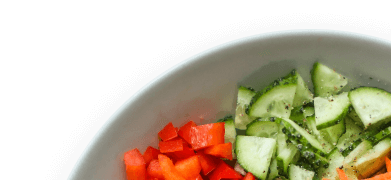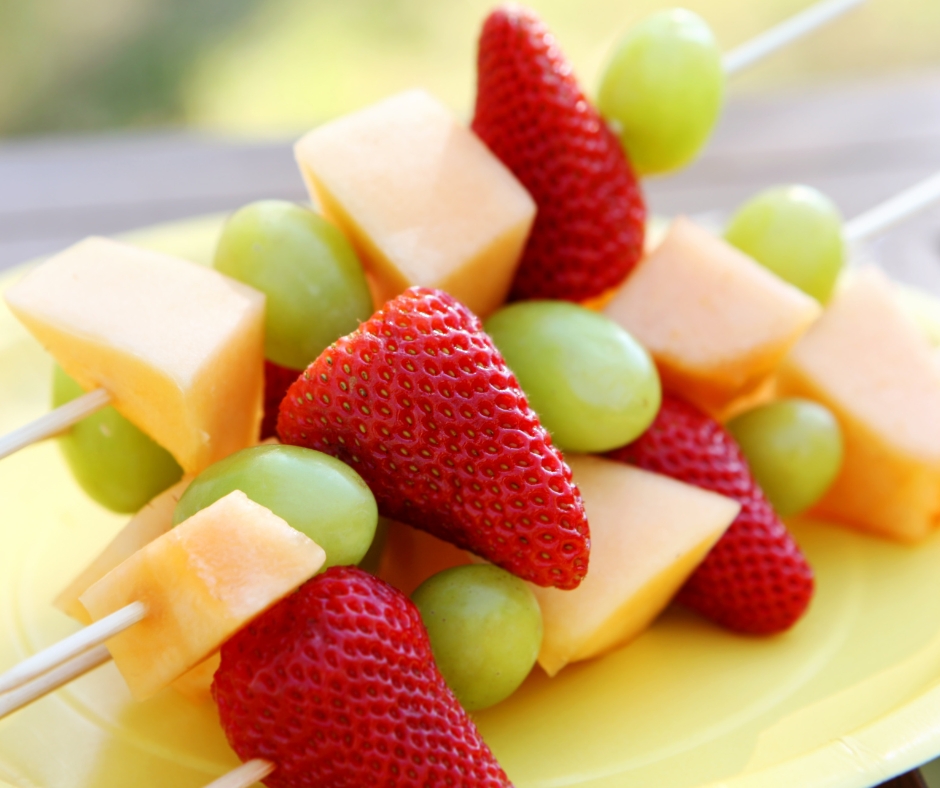Menu planning for babies
Early childhood services that provide food and drinks for babies from 6–12 months old should provide nutritious foods and drinks in line with the Australian Government’s Infant Feeding Guidelines [1] and Get Up & Grow: Healthy Eating and Physical Activity for Early Childhood [2].

By making simple changes to the regular menu, services can provide tasty meals and snacks that meet infants’ nutrition needs which are appropriate for their developmental stages.
First foods for infants
From around six months, babies need solid food in addition to breast milk or formula, for adequate nutrients and energy. Introducing solid food at this age is also important to help children develop skills required for eating such as chewing.
Foods provided to infants in long day care should be nutritious and of appropriate textures for their ages and developmental stages. See ‘Food textures and consistencies for age and developmental stage’ below.
The daily menu should offer a variety of age-appropriate nutritious foods each day for adequate energy and nutrients.
Iron
In line with the Infant Feeding Guidelines, to prevent iron deficiency, nutritious foods that contain iron should be among the first foods introduced. Iron-rich foods include iron-fortified infant cereals, pureed meat, poultry and fish, egg, cooked plain tofu and legumes (e.g. chickpeas, red, green or brown lentils, split peas) and beans (e.g. kidney beans, navy beans, broad beans, azuki beans, mung beans, lima beans, pinto beans).
As long as foods that contain iron are among the first foods introduced, other nutritious foods can be introduced in any order and at any rate that suits the infant.
Although cow’s milk products (including full-fat yoghurt, cheese and custard) may be given, cow’s milk should not be provided as a main drink before 12 months.
By 12 months of age infants should be enjoying a variety of nutritious foods from the five food groups, and eating from the regular daily menu.
Breast milk or infant formula should be continued while introducing solids. Long day care services should ensure they have sufficient stock of expressed breast milk or infant formula (provided by families) to support infants’ needs.
Note
Mashed vegetables are a good source of nutrients for infants, but do not provide the iron that babies need for growth and development. To prevent iron deficiency, include iron-rich foods in the menu for babies each day, such as:
- iron-fortified infant cereal
- pureed meat, poultry and fish
- cooked plain tofu and legumes (e.g. chickpeas, red, green or brown lentils, split peas) and beans (e.g. kidney beans, navy beans, broad beans, azuki beans, mung beans, lima beans, pinto beans).
Food textures and consistencies for age and developmental stage
Increasing and varying food texture for infants is essential for their oral motor development (e.g. learning skills required for eating, such as chewing) and to help them accept different food textures. It is important to always offer foods that are an appropriate texture and consistency for infants’ developmental stages. This means progressing quickly through the puree/mashed phase and offering foods with varied textures.
Infants should be introduced to a variety of foods of different colours and flavours (e.g. coloured fruit and vegetables). If foods are pureed or mashed (e.g. soft vegetables), they should not be mashed together but should be presented individually either in pieces or on a spoon to encourage infants to taste and accept individual flavours.
The following can be used as a guide for preparing foods of appropriate texture for children in care.
- From around 6 months – offer coarsely pureed/mashed foods, progressing to lumpy and finely chopped options.
- By 8 months – offer chopped and finger foods to encourage children to start feeding themselves.
- By 12 months – offer foods from the regular menu with a variety of tastes and textures in children’s size portions.
Refer to Table 1 for an example of a menu that caters for each of these stages by adapting the regular menu.
Drinks for infants – birth to one year and beyond
Breast milk or infant formula should be the main drink in the first 12 months of life. From around 6 months, small amounts of cooled, boiled tap water can supplement breast milk or infant formula.
After 12 months, water and full cream cow’s milk should be the main drinks offered at long day care. Tap water is an important source of fluoride for young children. Clean and safe tap water should be offered where available.
Low fat and reduced fat milks are not recommended in the first 2 years of life, but are suitable for children over the age of 2 years.

-
For the first three years of life, avoid giving foods with a high risk of choking. Always supervise children during meal and snack times.
-
Cow’s milk should not be given as the main drink before 12 months of age.
-
Salt and sugar should not be added to infants’ food. Offering sweet and salty foods in early childhood can result in children developing a preference for these foods which may be carried into later life.
-
Infants should not be given foods with high levels of saturated fat, added sugar and/or added salt (e.g. cakes, biscuits, confectionery and potato chips).
-
Honey should not be given to babies, as it may contain bacterial spores that can cause infant botulism if given to babies under 12 months of age.
-
Sweet drinks like fruit juice and fruit drinks, flavoured milk, soft drinks and cordials should not be given to infants and children. These drinks add sugar to the diet and can increase the risk of children becoming overweight and developing oral health problems.
-
Tea (including herbal tea) and coffee are not appropriate drinks for infants and children.
Special diets
Allergies
There is emerging evidence that delaying the introduction of solids beyond 7 months of age can increase allergies (particularly introducing allergens like wheat, egg, nuts, soy, fish and cow’s milk).
Avoidance of egg, peanuts and other nuts, wheat, cow’s milk and fish is no longer routinely recommended, even in children with a family history of allergy. Some families may request that their children are not given specific foods because of fear of allergies. This should be discussed with families and health professionals as required.
Appropriate complementary foods should be provided for children with a diagnosed food allergy.
For more information about managing allergies in early childhood services and cooking for children with food allergies, visit the allergy section on our website.
Plant-based diets
Plant-based diets, such as vegetarian and vegan diets, may not provide babies with enough important nutrients like iron, zinc and vitamin B12. The use of iron-fortified foods, such as iron-fortified cereals, is especially important for babies eating a plant-based diet because iron is vital for their neurocognitive development.
Advice from a health professional (such as a dietitian) may be required to ensure that the diet of vegetarian and vegan babies includes enough of these important nutrients. This should be discussed with parents.
Providing a menu that meets the nutrition and developmental needs of infants and young children does not need to be a difficult task.
By making simple changes to your regular menu, you can provide tasty meals and snacks that are appropriate for infants’ developmental stages.
Table 1 outlines how to adapt one day of an example menu (including breakfast, morning tea, lunch, afternoon tea and late snack) to meet the requirements of infants from birth to 1 year.
Table 2 provides additional examples of foods, drinks and textures that are appropriate for infants from birth to 1 year and beyond. You can use this table to help you choose appropriate foods and drinks when planning meals and snacks for infants.
Important points for food and drinks for babies:
- Include iron-rich foods such as meat, chicken, fish, tofu and legumes every day.
- Don’t delay introducing meat.
- Move on from smooth mashed and pureed foods, to minced and chopped foods as soon as possible. Encourage finger foods and self-feeding from around 8 months.
- Encourage a variety of colourful fruit and vegetables.
Table 1
| Meal | Adaptation for infants | ||||
|---|---|---|---|---|---|
| 0-6 months | 6 months coarsely pureed/ mashed | 6-8 months Lumpy, finely chopped, progressing to finger food | 8-12 months Chopped, finger foods, progressing to regular menu | 1-5 years | |
| Breakfast | Breast milk or infant formula (cooled boiled tap water as required) | Iron-fortified infant cereal Drinks: breast milk, infant formula, cooled boiled tap water (as required) | Iron-fortified infant cereal Drinks: breast milk, infant formula, cooled boiled tap water (as required) | Choice of: toast fingers with cream cheese, cereal with milk (lumpy texture), oats Drinks: breast milk, infant formula, cooled boiled tap water | Choice of: cereals, porridge, muesli, wholemeal toast Drinks: milk/water |
| Morning tea | Breast milk or infant formula (cooled boiled tap water as required) | Mashed fruit such as banana and kiwi, cooked apple and cooked pear Full fat yoghurt Drinks: breast milk, infant formula, cooled boiled tap water (as required) | Chopped soft fruit such as banana, kiwi, cooked apple and cooked pear Full fat yoghurt Drinks: breast milk, infant formula, cooled boiled tap water | Fresh fruit platter: Thin slices of apple, orange segments (membrane and pips removed), seedless grapes (cut in quarters with skins removed), pieces of banana, thin slices of pear and kiwifruit Cheese sticks or slices Drinks: breast milk, infant formula, cooled boiled tap water | Fresh fruit platter: apples, oranges, grapes, bananas, pears, kiwi Cheese cubes Drinks: milk/water |
| Lunch | Breast milk or infant formula (cooled boiled tap water as required) | Pureed cooked chicken Mashed cooked pumpkin, carrot, zucchini (not mixed together) Mashed cooked rice Drinks: breast milk, infant formula, cooled boiled tap water (as required) | Finely chopped cooked chicken Roughly mashed cooked pumpkin, carrot, zucchini, spinach (not mixed together) Mashed cooked rice Drinks: breast milk, infant formula, cooled boiled tap water | Prepare regular risotto recipe and include pieces of soft cooked chicken Rice Drinks:breast milk, infant formula, cooled boiled tap water | Baked chicken and vegetable risotto (ingredients: chicken, spinach, pumpkin, rice) Salad (carrot, lettuce, cucumber) Drink: water |
| Afternoon tea | Breast milk or infant formula (cooled boiled tap water as required | Hummus dip Mashed steamed carrot Drinks: breast milk, infant formula, cooled boiled tap water (as required) | Hummus dip Steamed, finely chopped carrot Toast fingers Drinks: breast milk, infant formula, cooled boiled tap water | Tzatziki dip (with finely chopped cucumber) Hummus dip Steamed carrot sticks, thin slices of capsicum Pieces of pita toast Drinks: breast milk, infant formula, cooled boiled tap water | Tzatziki and hummus dip, wholemeal pita bread, vegetable sticks (capsicum, steamed carrots) Drinks: milk/water |
| Late snack | Breast milk or infant formula (cooled boiled tap water as required | Drinks: breast milk, infant formula, cooled boiled tap water (as required) | Wholemeal toast fingers and cheese Drinks:breast milk, infant formula, cooled boiled tap water | Wholemeal toast fingers and cheese Drinks: breast milk, infant formula, cooled boiled tap water | Wholemeal cheese sandwiches Drink: water |
Table 2
| Age | Texture | Food and drink examples |
|---|---|---|
| Birth - around 6 months | Liquids only | Breast milk, infant formula |
| Around 6 months - 8 months | Mashed, progressing to minced and lumpy | - Breast milk, infant formula cooled boiled tap water (as required) -Iron-fortified infant cereals Cooked, finely chopped or pureed meat/chicken/fish, minced beef/lamb/pork - Mashed tofu/beans/chickpeas - Mashed hard boiled or scrambled egg - Pieces of soft cooked vegetables (e.g. potato, pumpkin, sweet potato, carrot, zucchini, parsnip, green beans, broccoli). Ensure these are not mashed together - Diced soft fruit (e.g. peach, mango, pear, avocado, melon, pawpaw) - Grated apple, ripe banana pieces, stone fruit (stones removed), sliced watermelon - Yoghurt (full fat), custard, cottage/ricotta/cream cheese, grated cheese - Grain (cereal) foods such as bread, toast, oats, pasta, noodles, rice, couscous - Cow’s milk in food |
| 12 months and beyond | Variety of textures | - Breast milk, cow’s milk as a drink, water - Casseroles (mildly seasoned), meat balls or rissoles (cut into bite sized pieces) - Eggs – boiled, poached or scrambled - Canned baked beans (salt reduced) - Continue above vegetables and start adding celery, cucumber, tomato, capsicum, mushrooms, cooked cabbage, cooked brussel sprouts - Continue above fruits and start adding seedless grapes (cut in quarters with skins removed), orange or mandarin segments (membrane and pips removed), kiwifruit, pineapple - Cheese sticks or slices, cream cheese - Soft cracker biscuits, pikelets, pasta (differing shapes, noodles and spaghetti cut up), couscous - Bite-sized sandwiches with moist fillings such as avocado, cream cheese - Smooth peanut paste* - Eating from the regular menu |
For more information please phone 1300 22 52 88 or email heas@nnf.org.au
Except where otherwise indicated, the images in this document show models and illustrative settings only, and do not necessarily depict actual services, facilities or recipients of services. This document may contain images of deceased Aboriginal and Torres Strait Islander peoples. In this document, ‘Aboriginal’ refers to both Aboriginal and Torres Strait Islander people. ‘Indigenous’ or ‘Koori/Koorie’ is retained when part of the title of a report, program or quotation. Copyright © State of Victoria 2016
Written and reviewed by dietitians and nutritionists at National Nutrition Foundation, with support from the Victorian Government.

Featured Recipes
Explore all recipes
Register your interest
"*" indicates required fields





